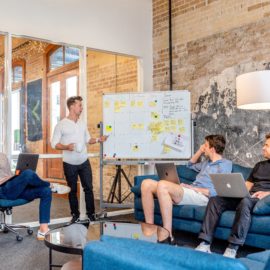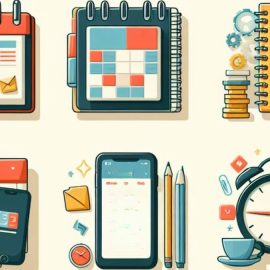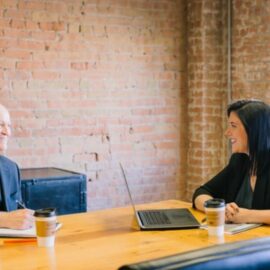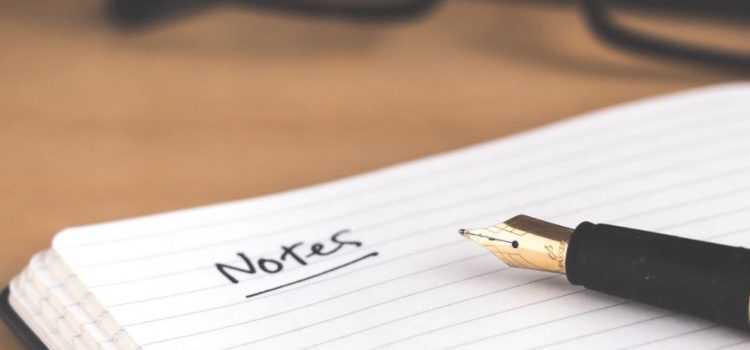
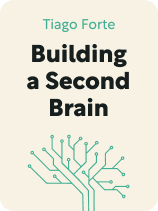
This article is an excerpt from the Shortform book guide to "Building a Second Brain" by Tiago Forte. Shortform has the world's best summaries and analyses of books you should be reading.
Like this article? Sign up for a free trial here.
What are some ways to record information? What do you do with notes after you’ve recorded them?
Recording information is a good way of making sure you never lose important notes that you could use for future projects. In Building a Second Brain, Tiago Forte gives effective ways to record information that you’ll store later.
Keep reading to learn how to record and store your saved information.
How to Record Important Information
Before you record information, Forte says you should pick one platform that will house your external storage system (ESS) and make sure all your saved information is sent there. There are numerous information storage apps to choose from, a list of which Forte explains can be found on his website. Once you’ve selected your platform, ensure that the information you save on other platforms—like ebook apps, social media apps, or mobile phone notes apps—is sent to your ESS inbox folder. Some content storage apps feature an automatic export function, but others may require you to export saved information manually.
(Shortform note: Automatically exporting notes from one platform to another is getting increasingly difficult due to issues involving privacy and copyright. Rather than clicking a button and having a compilation of notes exported, people often have to copy and paste each note individually or re-type information from one source to another when the “copy” function isn’t available. However, Evernote, a popular note-taking software, allows you to directly import digital information using its Web Clipper tool. This will save you time and effort when content apps like Kindle don’t have automatic export features or don’t allow you to copy and paste text.)
Next, record information that you come across—this can be anything from personal insights or realizations to quotes from articles or meeting notes. However, Forte warns to only save information that resonates with you or makes you reflect—it must be either inspiring, useful, personally important, or something that changes your current ideas or beliefs. If you’re not selective with the information you save, your ESS will end up being cluttered and unmanageable.
(Shortform note: In Getting Things Done, David Allen recommends a similar system for recording important information; however, his opinion on what to save differs from Forte’s. Rather than only saving information that’s either inspiring, useful, personally important, or changes your beliefs, as Forte recommends, Allen suggests saving any idea that’s stuck in your head. Doing so will rid your brain of all “mental clutter” and therefore restore your mental energy, which you’ll need later when it’s time to sort ideas into different folders.)
When you record information, save only what’s necessary for it to be actionable and for you to remember why it’s important. For example, if you liked one photo from an article you read, save the photo instead of the whole article. Or, if you find an article that you don’t have time to read but think might be useful, record the link and include a brief note explaining why you’re saving it to remind yourself later.
(Shortform note: Some education experts agree with Forte that good notes only capture the components necessary for you to understand and utilize them later. They add a few tips to make this recommendation more actionable. First, record any questions you have or confusing parts of the content so you can fill in logic gaps later and ensure you fully understand the information. Second, use a visually clear and concise note-taking format, and use the same format every time—this will ensure notes are easy to read and understand in the future. Third, use abbreviations, symbols, bullet points, or short phrases rather than complete sentences in your notes to help you focus on the main concepts and record information quicker.)
Next Step: Sort Information
Next, Forte explains that you should sort your saved information out of your inbox and into your folders at a designated time, not immediately after saving something. He recommends setting time aside at least once a week to clear your inbox and sort information into folders and sub-folders.
(Shortform note: While Forte recommends clearing your ESS inbox once a week, experts argue that you should clear your inbox each day to increase productivity. Despite the fact that this advice pertains to your email rather than your ESS inbox, the benefits arguably still apply. Clearing your inbox daily will give you a clean mental slate and help you stay more aware of what you can accomplish immediately, ultimately expediting the creative process. For example, you might realize after clearing your inbox and sorting information on a Monday night that you have enough material to start executing a project on Tuesday. This would give you six extra days of work that you would have wasted if you’d waited until the following Sunday to clear your inbox.)
When sorting information, Forte says that you should first see if it fits in any of your current goals sub-folders. If not, consider your ongoing engagements subfolders. If it doesn’t fit there, see if it’s relevant to any of your areas of interest subfolders. If you can’t find a sub-folder to sort the information into but still feel like it might be relevant someday, put it into your hold folder.
How to Effectively Sort Information
In Getting Things Done, David Allen recommends an alternative process for sorting important information so you can either apply it to current projects or save it for a future, more relevant project. Rather than sorting information into folders and subfolders based on where it’s most relevant, as Forte recommends, Allen suggests sorting information based on its actionability.
First, if the information doesn’t require any action (or isn’t relevant to an action you’re working toward, like a current project), move it to your reference files. (In an ESS, this would be your topics of interest, ongoing engagements, or hold folder, as discussed in previous commentary.) If the information requires an action that takes less than two minutes (such as sending a message to a friend), do it immediately.
Next, if the information requires an action that takes longer than two minutes, decide whether or not it’s something you can or should act on in the near future. If you should act on it, create a new project to complete the action (a new subfolder in your current goals folder). If you can act on the information (meaning it already applies to one of your commitments or interests), then determine what you should do with it. (Sort it into one of your current goals, ongoing engagements, or topics of interest subfolders.) Finally, if it’s not currently actionable, move it to your someday/maybe folder (what we refer to as your hold folder).

———End of Preview———
Like what you just read? Read the rest of the world's best book summary and analysis of Tiago Forte's "Building a Second Brain" at Shortform.
Here's what you'll find in our full Building a Second Brain summary:
- Why we get frustrated and overwhelmed in the age of information
- Why modern humans need an external storage system (ESS)
- How to make and organize an ESS to increase creativity and productivity

